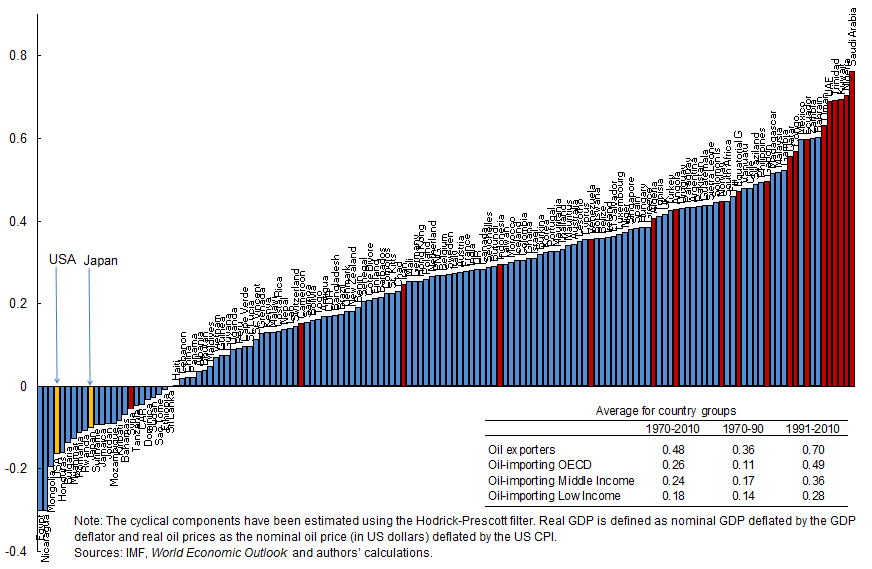The big picture - It is no surprise that import bills go up when oil prices increase. It is more surprising that GDP often goes up too. Figure 1 depicts the correlation between oil prices and GDP for 144 countries from 1970 to 2010. More precisely, it shows the cyclical components of oil prices and GDP, with long-term trends excluded. The set includes 19 oil-exporting countries, represented by red bars, and 125 oil-importing countries, represented by blue bars. A positive correlation indicates that when oil prices go up, GDP goes up, and when oil prices go down, GDP goes down.
The message is clear. In more than 80% of the countries, the correlation between oil prices and GDP is positive, and in only two advanced economies – the US and Japan – it is negative. One of the contributing factors to this pattern is that in 90% of the countries, exports tend to move in the same direction as oil prices.

...We find no evidence of a widespread contemporaneous negative effect on economic output across oil-importing countries, but rather value and volume increases in both imports and exports. It is only in the year after the shock that we find a negative impact on output for a small majority of countries.

Please continue reading at: